
The Abbey of St. Symphorian, Autun, (French : Abbaye Saint-Symphorien d'Autun) is a former abbey, later a priory, of Benedictine monks located outside the walls of Autun in Burgundy, France. [1] [2]

The Abbey of St. Symphorian, Autun, (French : Abbaye Saint-Symphorien d'Autun) is a former abbey, later a priory, of Benedictine monks located outside the walls of Autun in Burgundy, France. [1] [2]
The abbey was named after Saint Symphorianus of Autun, a 2nd-century martyr, and was founded by Saint Euphronius, bishop of Autun, in the 5th century; its existence is attested in 452. It was attached to the Abbey of St. Martin, Autun, in 910, of which it later became a priory.
The monastery was rebuilt in the 17th century. It was suppressed in the French Revolution and the surviving premises are now privately owned. It was listed as a monument historique in 1993 for its buildings and given classified status in 1994 for the perimeter wall.
Saint Germain of Paris (d. 576) was abbot here, as was Virgilius of Arles (d. October 610).
Saint Marius of Avenches, bishop of Lausanne in the 6th century, was from the region of Autun and was believed to have been educated here. Saint Eustace of Bourges (d. 607) trained here before becoming archdeacon of Autun and later Archbishop of Bourges. [3]
Among the abbey's properties was the priory church of Saint-Symphorien in Champagne-en-Valromey (1055), in the deanery of Ceysserieu. [4]
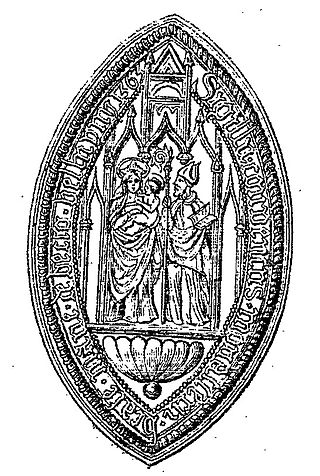
Bec Abbey, formally the Abbey of Our Lady of Bec, is a Benedictine monastic foundation in the Eure département, in the Bec valley midway between the cities of Rouen and Bernay. It is located in Le Bec Hellouin, Normandy, France, and was the most influential abbey of the 12th-century Anglo-Norman kingdom.
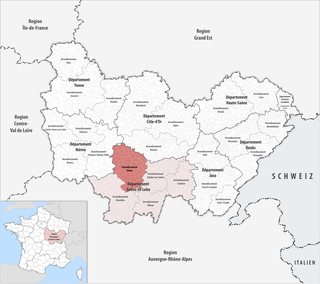
The arrondissement of Autun is an arrondissement of France in the Saône-et-Loire department in the Bourgogne-Franche-Comté region. It has 89 communes. Its population is 131,392 (2016), and its area is 1,994.3 km2 (770.0 sq mi).

Ligugé Abbey, formally called the Abbey of St. Martin of Ligugé, is a French Benedictine monastery in the Commune of Ligugé, located in the Department of Vienne. Dating to the 4th century, it is the site of one of the earliest monastic foundations in France. The original abbey having been destroyed during the French Revolution, the current monastic community dates from 1853, and belongs to the Solesmes Congregation.

The Diocese of Autun (–Chalon-sur-Saône–Mâcon–Cluny), more simply known as the Diocese of Autun, is a Latin Church diocese of the Catholic Church in France. The diocese comprises the entire Department of Saone et Loire, in the Region of Bourgogne.

The Basilica of Saint-Martin d'Ainay is a Romanesque church in Ainay in the Presqu'île district in the historic centre of Lyon, France. A quintessential example of Romanesque architecture, it was inscribed on the UNESCO World Heritage List along with other notable buildings in the centre of Lyon as a testimony to Lyon's long history as an important European town and unique blend of architectural styles.

Toury-Lurcy is a commune in the Nièvre department in central France.
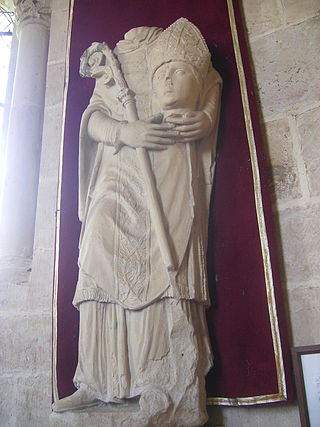
Saint Reverianus of Autun was a 3rd-century bishop of Autun and martyr. He is venerated as a saint by the Roman Catholic Church. According to tradition, Reverianus was of Italian origin, he was sent by Pope Felix I to evangelize the Aedui, a Gallic people of Gallia Lugdunensis and is considered the "apostle of the Morvan".
Eustache also known as Eustace or Eustase of Bourges or Autun where he originated, was a 6th-century priest who became bishop of Bourges. He trained at the Abbey of Saint-Symphorien, Autun.
Saint Nectarius of Autun was a 6th-century bishop of Autun, and a saint of the Roman Catholic Church.

Saint Euphronius of Autun was a bishop of Autun between 450 and 490. According to Dom Basil Watkins OSB, Euphronius "was one of the greatest bishops of Gaul..."in the 5th century.
Gregory of Langres, also called Gregory of Autun, was a Gallo-Roman prelate, born around 446, count of Autun, in Saone-et-Loire then once widowed, towards 500, he becomes bishop of Langres, from 506 to his death in 539. Gregory is a Saint in the Eastern Orthodox Church, which celebrates his feast day on 4 January.

The Abbey of St. Martin is a former Benedictine monastery in Autun, Saône-et-Loire, France, to the northeast of the city just outside the city walls, on the right bank of the Arroux and to the north of the Roman road from Autun to Langres, Beaune and Besançon.
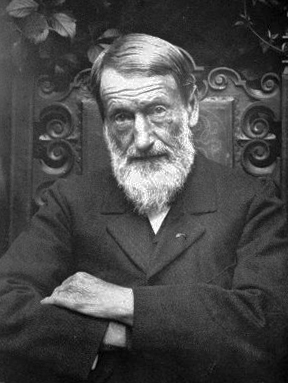
Jacques-Gabriel Bulliot was a French historian and wine merchant, and a member of the Eduenne Society of Arts, Sciences and Arts, founded in Autun in 1836. He discovered the site of Bibracte he located at Mont Beuvray (Saône-et-Loire).
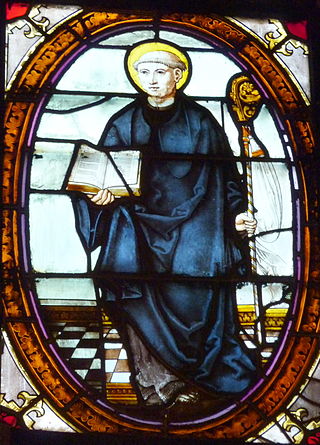
Saint Mederic or Medericus, also known in French as Saint Merri or Médéric, was a monk and a hermit, who is considered patron saint of the right bank of the river Seine in central Paris.
Frodulphe de Barjon, known as Saint Frou, born in the 7th century at Autun, and died in the 8th century at Barjon, was a religious and holy French Catholic, a disciple of Saint Mederic.
Jean VI Rolin or Rollin, often referred to as Jean II Rolin to differentiate him from his father Jean Rolin or Rollin in the succession of the offices of Bishop of Autun, abbot of the Abbey of St. Martin, Autun, and prior of the Abbey of Saint-Marcel-lès-Chalon, was a French bishop.

The Abbey of Saint-Jean-le-Grand is a former Benedictine nunnery, in Autun, Saône-et-Loire, France, possibly founded by Queen Brunhilda and Bishop Syagrius of Autun. According to Gregory of Tours, it already existed in 589.

Solignac Abbey, or the Abbey of Saint-Peter and Saint Paul of Solignac, is an abbey in Solignac, near Limoges, in Haute-Vienne. It was founded around 631 AD by Saint Eligius (Éloi). The present buildings date to the 12th century, but have been modified many times since then. The abbey was dissolved during the French Revolution and the buildings were put to new uses, including a prison, boarding school, porcelain factory and seminary. As of 2021 there were plans to restore it back to its original function as a monastery.

The Abbey of Saint-Symphorien or St Symphorian's Abbey is a former Benedictine monastery founded by Saint Papoul, bishop of Metz, in 609. It was the first Benedictine abbey for men built in Austrasia.